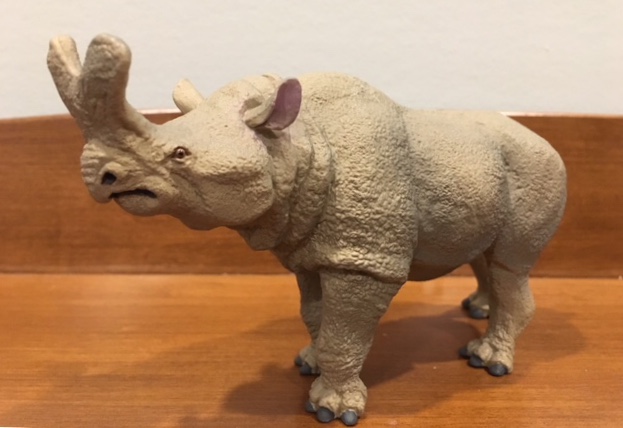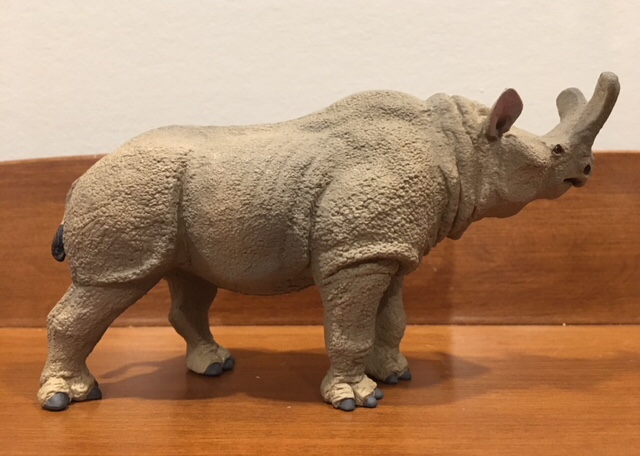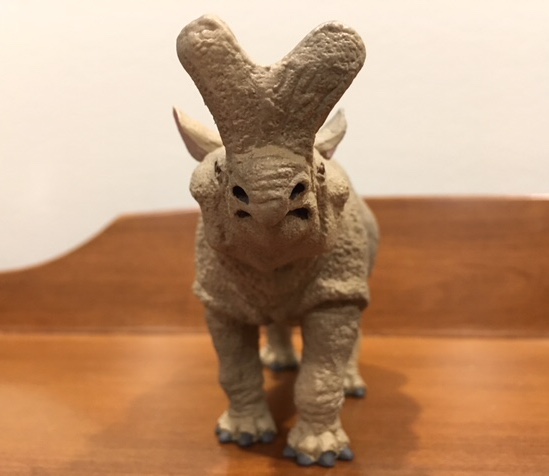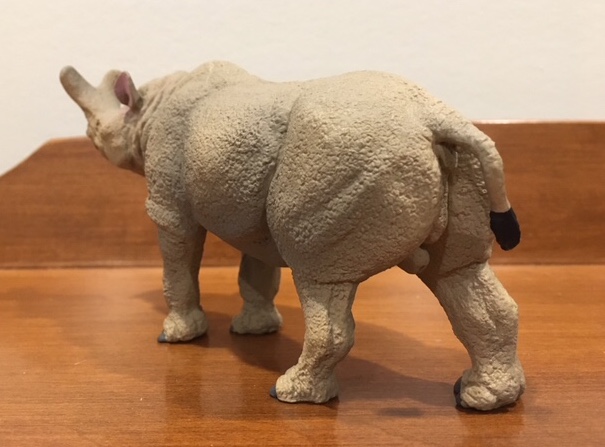Fighting for the ultimate prize, Lunk deals a heavy blow to his opponent’s flank in an attempt to end the battle. But the other male responds in turn, and Lunk experiences a sudden surge of pain as a couple of his ribs shatter. Beaten and exhausted, he lowers his head and slowly backs away, conceding defeat. The victor lets out a scornful snort, then turns and trots off toward the waiting females. Lunk, meanwhile, shuffles away forlornly. Some day he may be able to battle for mating rights again, but for now, he will have to rest . . .

Megacerops is one of the largest and most famous of the brontotheres, an extinct group of ungulates that superficially resembled rhinos, but were more closely related to horses and possessed horns made of bone. Mojo Fun released a pretty decent figure of this powerful beast back in 2013. And as you saw from the link in my intro, CollectA released a dynamic and rather . . . virile version in 2012 which was voted Toy of the Year by Prehistoric Times magazine. Now let’s see what the 2018 Wild Safari Megacerops is like, shall we?

At 16 cm long and 9 cm tall at the shoulders, this is a pretty beefy beastie, second only to the American mastodon among Safari’s prehistoric mammals. Its main colour is a greyish beige with slightly darkened patches on the flanks, dark grey claws, and a black tail tuft. The tiny eyes are medium brown, the nostrils and mouth are very dark brown, and the insides of the ears are dull pink. Not what you’d call a vibrant colour scheme, but considering how dull modern elephants and rhinos are, this looks quite realistic and appropriate for a Megacerops.

You can clearly tell that Lunk here is a male thanks to his sizable Y-shaped horn and sizable genitalia (although not as prominent as on the CollectA version). He is posed in a rather regal stance with his head held high, his ears perked, and his tail swinging to the right. Though small, his eyes are wide and alert, and his downturned mouth gives him a somewhat unhappy appearance.

Lunk’s skin has a fine pebbled texture and hangs in heavy folds around his neck and joints, just like on a white rhinoceros. His thick neck, humped shoulders, and muscular legs make him appear very strong and rugged. At least one Megacerops specimen was found to have healed ribs, which could only have been broken by another Megacerops, probably in a fight over territory or mates. And in terms of anatomy, there’s nothing to quibble about on this toy. Indeed, it bears a strong resemblance to this life-sized model at the Canadian Museum of Nature here in Ottawa, Ontario.

It’s payback time!
Overall, I find this Megacerops to be scientifically accurate, beautifully crafted, and a lot of fun to play with. Yet another home run for both the Wild Safari line and sculptor Doug Watson. Highly recommended!

Disclaimer: links to Ebay and Amazon on the DinoToyBlog are affiliate links, so we make a small commission if you use them. Thanks for supporting us!




So would Lunk be in the range of 27 to 30 scale?
I suspect that “Lunk” might be the right name for this big fellow. I have severe doubts that he’ll be enrolling any time soon in the department of philosophy. Then again, he doesn’t have to be a philosopher-king, just a king. Maybe next time he’ll be ready for his CollectA rival.
While I also own and much appreciate the CollectA version, I deceided to add the new Safari aswell and in my displayed collection it now replaces the CollectA – I really like its “old style” look, as in my very first books about prehistory.
It is certainly a more scientific figure than other versions. I like it a lot because of how well it is finished, and how detailed it is in all parts of the body.
The conservative vision of this figure fascinates me very much, without taking away that the versions of Collecta or that of Mojo are also good figures.